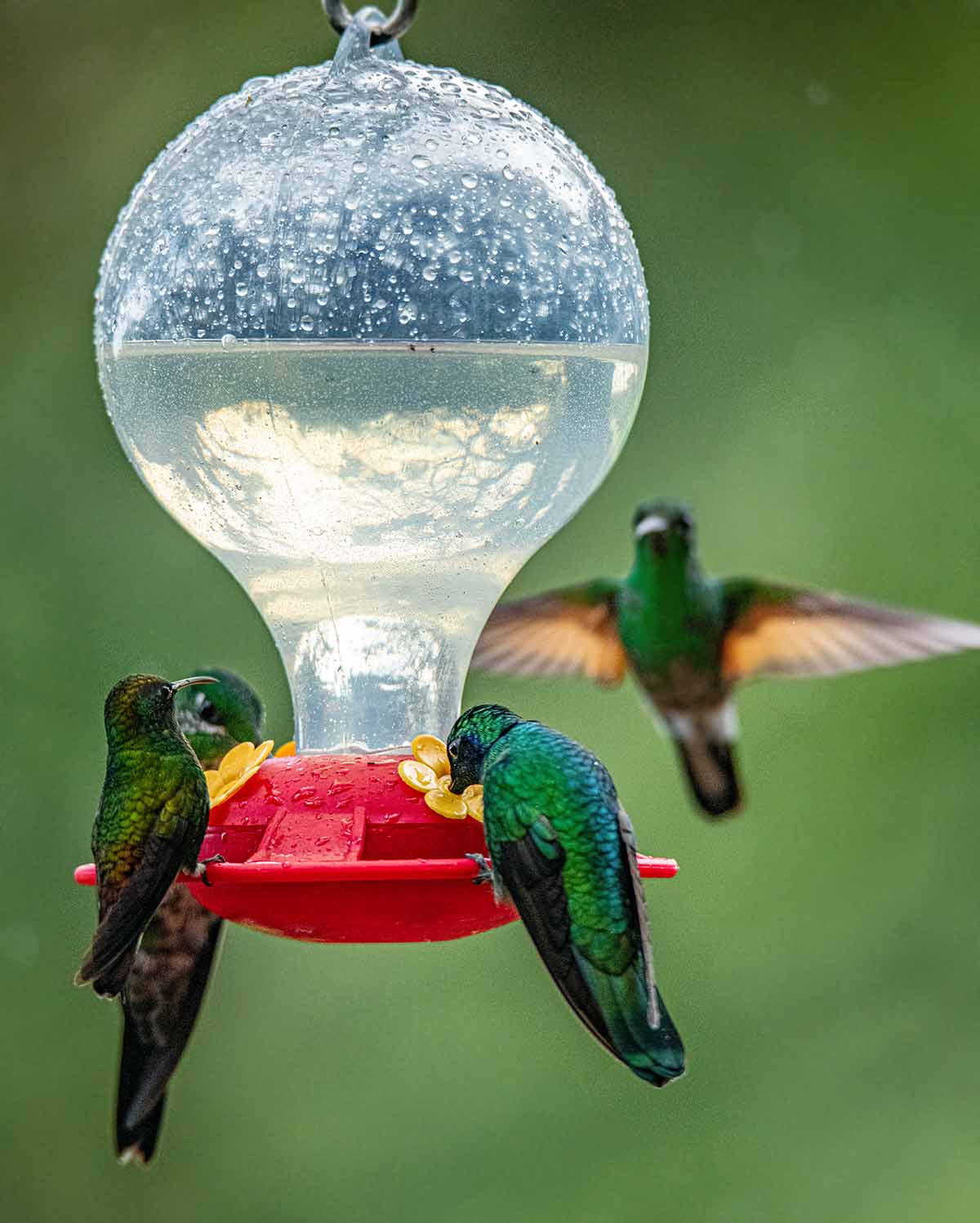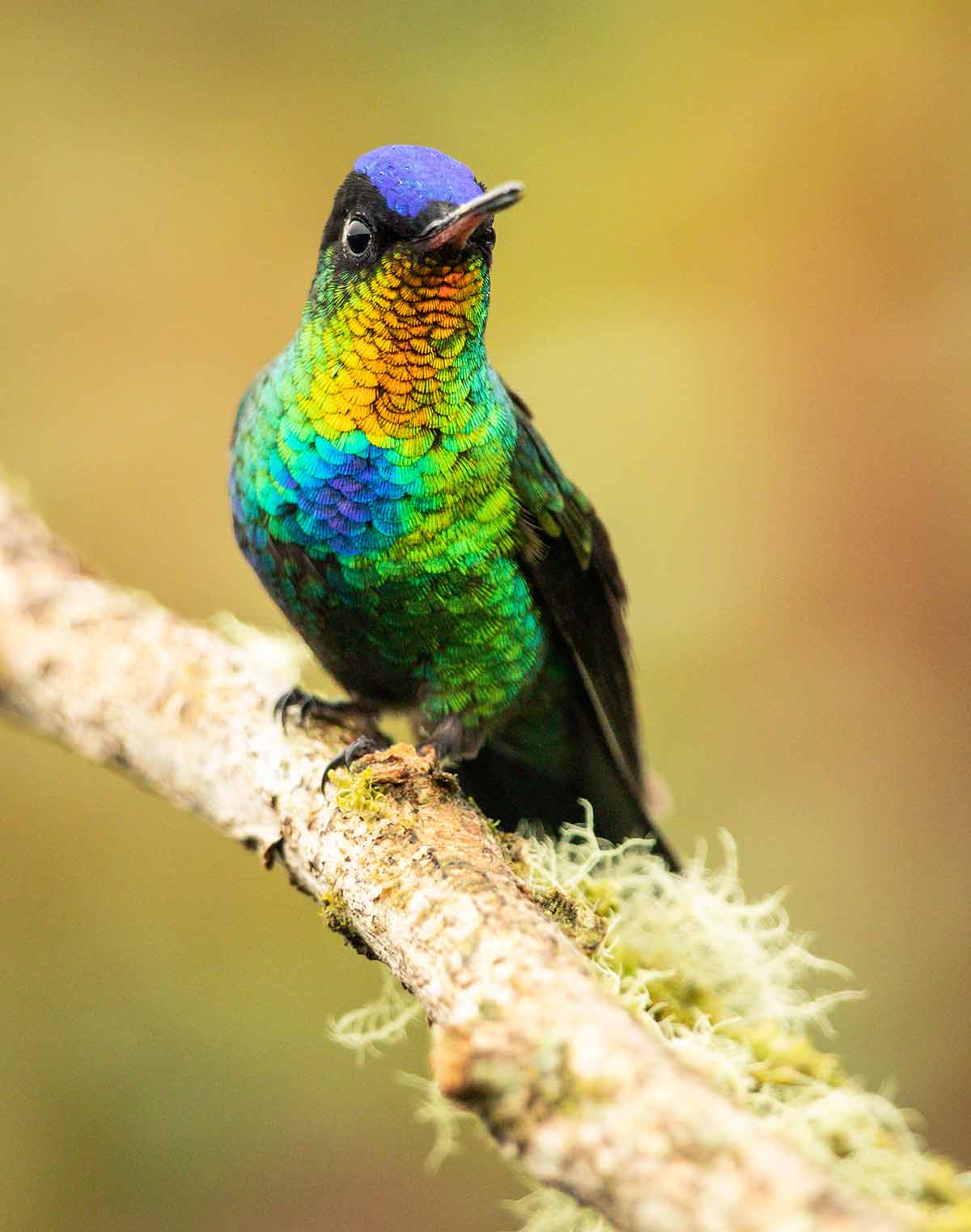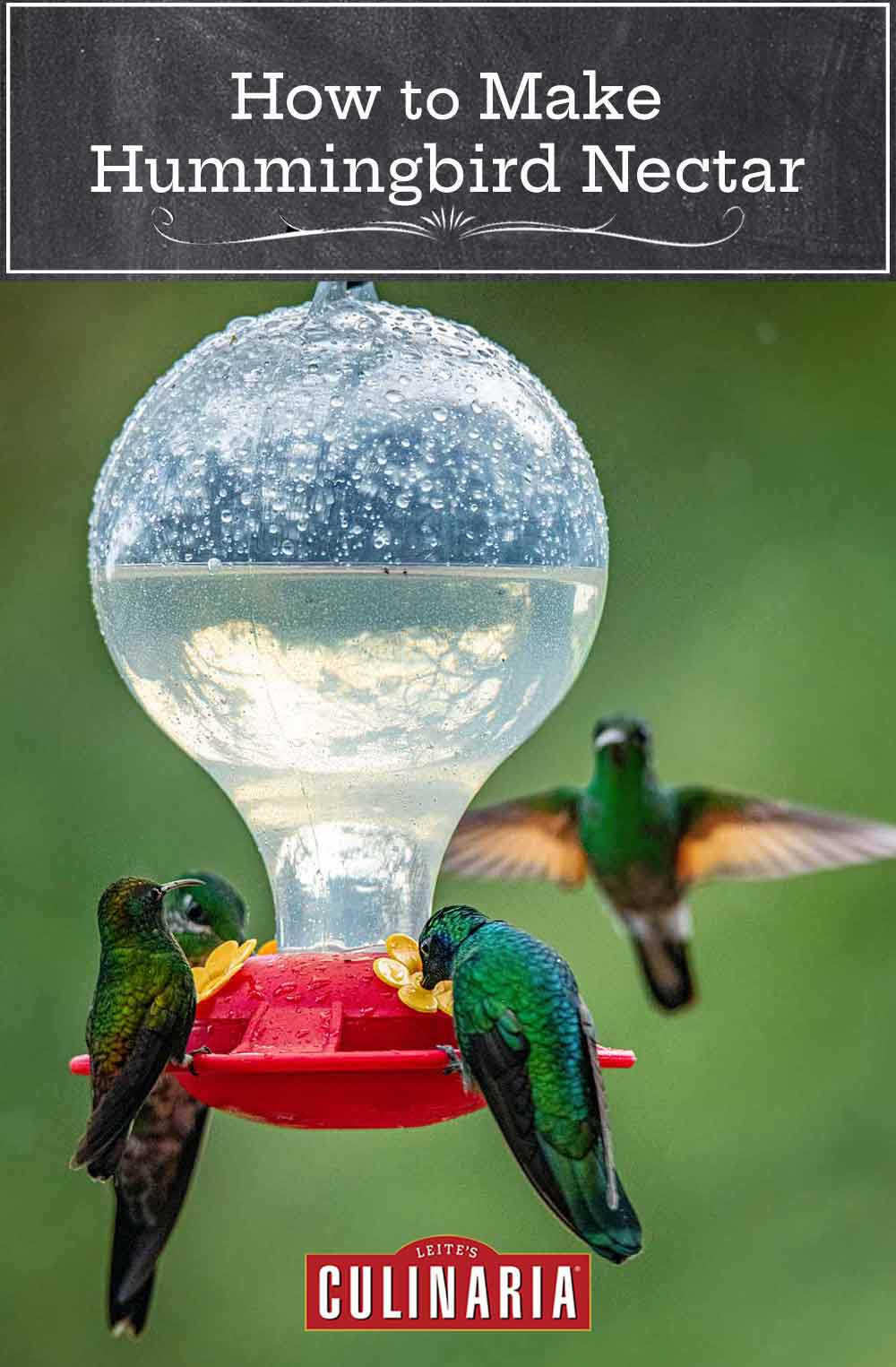
Jump To
- What are the benefits of making homemade hummingbird nectar?
- What’s the recipe for hummingbird nectar?
- What about using other types of sugar or sweeteners?
- Is red dye harmful to hummingbirds?
- How long will hummingbird nectar last?
- How to stop hummingbirds from fighting over the feeder
- How to help hummingbirds get ready for migration to warmer weather in the autumn
- How can I commune with my hummingbirds?
If you’ve visited Leite’s Culinaria even a few times, chances are you’ve discovered I’m known as Fatty Daddy. It’s a nickname I carry with pride–not so much as a nod to my porkly padding but rather for the affection with which it’s uttered by my worshipful staff. [Editor’s Note: Huh?!]
What you most likely don’t know is that for a tiny flock of folks, I’m known simply as Sugar Daddy.
Like all sugar daddies worth their bankrolls, I adhere to a clear-cut arrangement: I willingly pay for homes, take care of bills, and finance endless meals. In exchange, my little chickies are required to delight me, thrill me, charm me.
Lest you think you need to run to The One and warn him that I’ve practically set up a brothel of illicit doings, I’m talking about being a literal sugar daddy—to a squadron of hummingbirds.
For eight summers, our yard has swarmed with daredevil hummingbirds. We affectionately call them “humbees.” They feast on anywhere from one to several feeders, depending on the number of birds in the charm—charm is hummingbird speak for “flock.” And during that time, I’ve learned a lot about feeding, enjoying, and caring for these magnificent tiny flying machines.
What are the benefits of making homemade hummingbird nectar?

What aren’t the benefits is a better question. Homemade nectar is easy to make. It’s cheap–like 50 cents for a big-ass feeder’s worth. It’s fun and educational for the kids. And it makes you feel connected to nature. (Ok, I’m getting all woo-woo here, but it’s true for me. I feel like I’m giving back to ole Mama Nature and not always taking.)
What’s the recipe for hummingbird nectar?
It couldn’t be simpler.
4 cups water (if your tap water is hard, consider spring water)
1 cup granulated white sugar
- In a medium pot, bring the water to a boil over high heat.
- Remove the pot and pour in the sugar, stir until it dissolves, and then let the nectar cool completely.
- Fill the feeder.
- Marvel.
What about using other types of sugar or sweeteners?
Short answer: No.
Long answer: Nooooooooo!
You might think you’re being helpful by using organic, natural, or raw sugar, but they all contain varying amounts of impurities, such as iron, that can be harmful. Honey can promote a potentially deadly fungal growth. Brown sugar contains molasses–a big no for the kids–and confectioners sugar contains cornstarch. Stick to the white stuff.
Is red dye harmful to hummingbirds?

It’s an indubitable truth that hummingbirds are attracted to the color red. Why? Because in nature, red often signifies a high-energy food source. (Think of it as avian Red Bull.) That’s why hummingbird feeders are ruby red. And so, too, are commercial liquid and powdered nectar.
Is red dye harmful to birds? Is it toxic? Will it kill them? Back in the day, red dye was toxic to humans, and it was thought to be the same for animals. Today, red dye is supposedly safe for humans. But is it safe for hummingbirds? Some hummer experts have witnessed a higher rate of death and tumors in birds that sipped red nectar. Sorry, but my flying jewels aren’t becoming statistics. For me, it’s just sugar, water, and a whole lotta love.
If you feel the need to pimp your feeder, do as I did. I took an old, faded feeder and festooned it with plenty of red ribbons. The hummingbirds found it irresistible. (Why I have rolls of sparkly red ribbon on hand is none of your business, thank you very much.)
How long will hummingbird nectar last?
About a week in the fridge. I used to make a half-gallon of nectar at a time and store it in the fridge in quart-size glass bottles with rubber stoppers. That would last me eight days when we had our biggest charm of birds. Alas, most of my babies didn’t return this year. (I try not to take it personally, and sometimes fantasize they, too, are in pandemic lockdown mode somewhere in Boca Raton, concerned about giving their fat old Sugar Daddy any nasty virus.) This summer, I’ve been making a small batch every two or three days, which is the longest you want the nectar to sit in the feeder, otherwise it will start to ferment.
How to stop hummingbirds from fighting over the feeder
I’ve watched, with unvarnished envy, videos of huge charms of hummingbirds in a feeding frenzy at their round red snack bars. I mean dozens of birds sharing the buffet–graciously swapping seats and giving up their perches, making sure everyone has enough to eat. At our house, especially in years past, these suckers dive-bombed and aggressively chased each other off in the name of protecting a motherlode of nectar so large that could feed the entire feathered population of Rhode Island. (Cue the soundtrack to “The Birds.”) It seemed no one but the mightiest ever sipped. To remedy that, I hung feeders all over the yard, making it impossible to commandeer more than one at a time. Costly? A bit. But at least I got humbee action from every window of the house.
How to help hummingbirds get ready for migration to warmer weather in the autumn
Nectar is energy. And energy feeds humbees’ tiny wings and hearts, which can beat up to 4,800 and 1,300 times per minute, respectively. Toward the end of the season (for us in Connecticut that’s mid-September), I change their nectar ratio from 4:1 to 3:1. It gives the hummingbirds an extra boost of energy for the long haul south.
How can I commune with my hummingbirds?
As flitty as they are, hummingbirds are pretty social creatures. A few summers ago, I got some real Barbara Walters up-close-and-personal time with them. I took one of our flying-saucer feeders off the window and held it out in front of me. A few minutes later, one of the more adventurous males swooped by, hovered inches from my face (so close I could feel the breeze from his wings), then darted away. In no time, he and a bunch of his iridescent brethren were noshing at the feeder. I stood in amazement as they relaxed enough to sit on their perches, oblivious of me. Alas, I fear it was hunger rather than my Buddha-like spirit that attracted them. [Editor’s Note: David asked us to alert you that it’s not him in the video. You would know if it was David by his flair for drama even when standing still.]
Perhaps my greatest joy was the time I positioned my hand so that it covered most of the perch. One brave little Calliope hummingbird alighted on my finger and settled in for a long sip.
It doesn’t get much better than that.
xo,














There’s a website called The Hummingbird Feeder After replacing many feeders over the years due to leaking, wasps, etc., I came across this site, purchased one feeder (they are a little pricy but WORTH the money! This site also contains a wealth of information about hummers.
Ann, thank you so much for the info. I think people will find it very helpful!
I really enjoyed your site! It appears that you live in RI. I live in Cumberland RI and am looking for advice as to when I should put out the hummingbird feeders. I try to get them out early.
Patty, I grew up in Swansea, but I now live in Connecticut. I always have the feeders and the nectar ready by mid-April. The hummingbirds tend to reach here by the end of April or the beginning of May. The minute I see one of my hummers at the window, where I hang one of my feeders, up they go. There’s no harm in putting up the feeders in the next week or two, but you’ll just be looking at lonely feeders until the little ones make their way up north.
I’m a sugar daddy. Good article.
Thanks, Daddy!
Hello David,
You know if you wear a red shirt and stand very still anywhere in your yard near a feeder, you will actually find hummers landing on you. It happened so many times to my late husband. Eventually, you won’t even have to stand still. They will land on your shoulder for a ride-along. Lol
Also, I set on my deck to watch them & talk to them when they come to eat. I actually have one that flies over to me to check me out. As if to say Thank You. ?
Ellen, I didn’t know that, but I’m going to try it. I have the perfect red shirt.
Great. Let me know. Also, you can wear it & move around the yard. Once they see it & know you’re not a threat, they’ll come close to you.
My dream!!